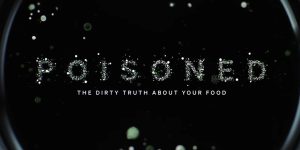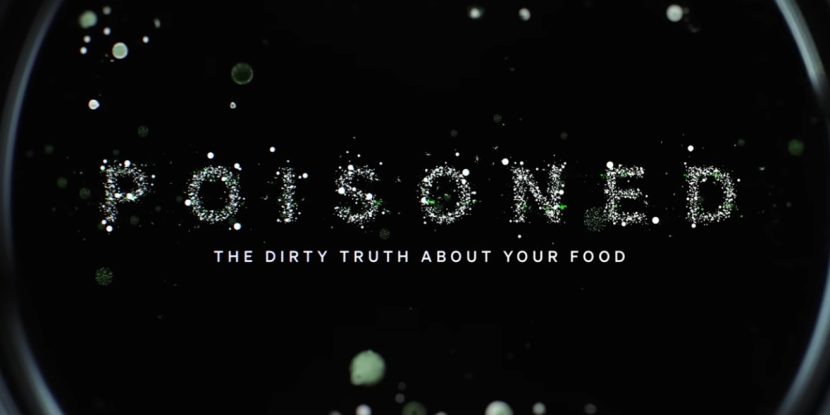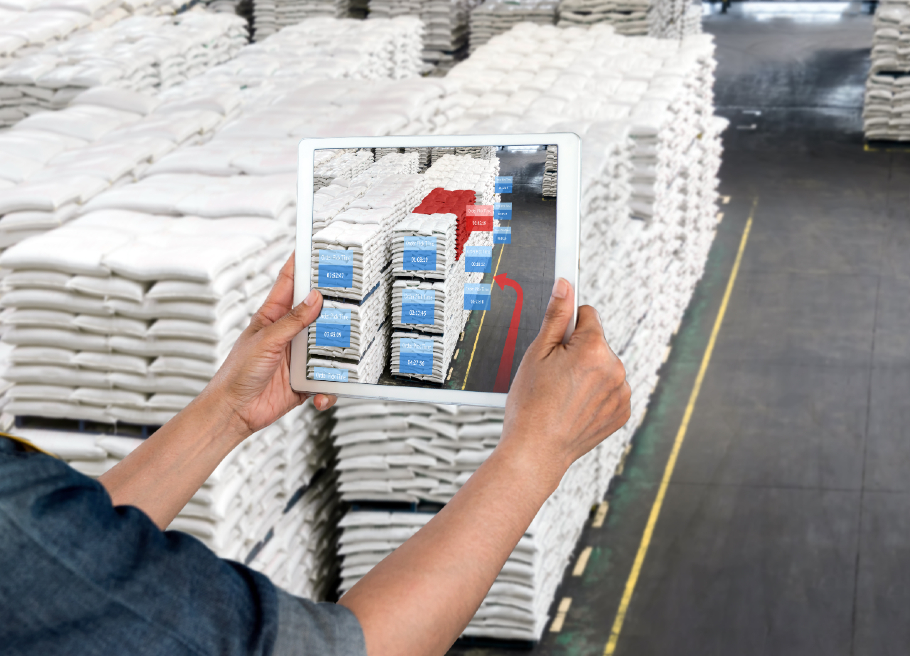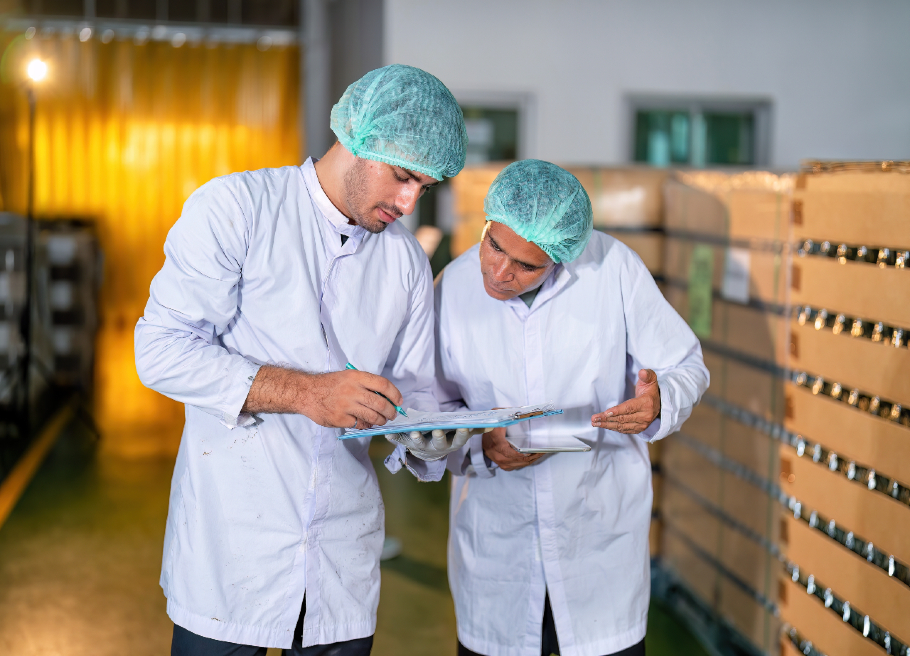‘Poisoned’ vs. Progress: A Balanced View on Food Production and Regulation
BLOG POST
By Keith Warriner
For many consumers, their only concern around food is how to navigate the aisles of the supermarket and find a good deal.
There is little thought about how food is produced and how it finds its way onto store shelves. Most consumers also assume that the food they buy is safe because government regulators and inspectors are keeping constant oversight. Therefore, many viewers were likely shocked when a documentary called ‘Poisoned’ hit Netflix in early August.
Did the documentary just fearmonger?
The very title – ‘Poisoned: The Dirty Truth About Your Food’ – could make people think that it was sensationalizing the issues to draw in ratings. That is, after all, the nature of media in these modern times. Though some artistic license was taken with the documentary, most food industry issues described, were true.

Image taken from: NETFLIX’s ‘Poisoned’ Trailer
The documentary opens with the famous Seattle attorney Bill Marler walking through a supermarket and pointing to all of the different foods that have been involved in a foodborne illness outbreak, with a particular focus on fresh produce. The documentary then goes on to highlight how Marler got involved in litigating foodborne illness with the 1993 Escherichia coli O157:H7 outbreak linked to undercooked hamburgers sold by fast-food franchise Jack-in-the-Box.
The outbreak was devastating, killing four children, and causing 732 cases of illness, 178 of which required long-term treatment. Marler’s crusade from the outbreak caused regulators to designate E. coli O157:H7 an adulterant, which means from a regulatory standpoint there would be zero tolerance moving forward.
Unfortunately, the documentary failed to describe how the food industry met the ‘zero tolerance’ target, which was by introducing interventions, establishing robust sampling plans, and ensuring food safety management systems are applied as written. In fact, the documentary turned in on its message of how the beef sector had improved by accusing Dr. Mindy Brashears, an academic and researcher, of taking money from the industry as if it was a bribe to tow the food safety narrative. What the documentary should have mentioned is that without industry support research in the laboratory cannot transition into commercial application.
From reviewing the conversations on various social media platforms, it is clear Netflix’s ‘Poisoned’ has been widely viewed and made an impact.
The fresh produce sector and regulators lost for words
The documentary then turned to the 18 outbreaks linked to leafy greens over the last five years. They interviewed Frank Yiannas, former Deputy Commissioner of Food Policy and Response for the U.S. Food and Drug Administration (FDA), and Sandra Eskin, Deputy Under Secretary of Food Safety at the U.S. Department of Agriculture (USDA). They were frank about the limitations and restrictions of both agencies.
They acknowledged the issues within the food regulatory system and came across as essentially throwing their hands in the air making it seem like they were powerless to bring about positive change. Viewers of the documentary may be astonished as they put trust in the regulatory agencies to govern the food system, but there was no response by industry who failed to provide reassurance to consumers.
The documentary interviewed Tim York of the Leafy Greens Marketing Agreement (LGMA), which was established in the wake of the E. coli O157:H7 outbreak linked to spinach in 2006. Unfortunately, York came across as having no answers, as well, though he reassured the public that there would have been more outbreaks if it hadn’t been for the efforts of the LGMA.
While it is true that the initiatives following the Leafy Green outbreaks brought a more intense focus on fresh produce safety, as Marler points out that the industry tended to tout superficial, or more visual, initiatives like glove use in the field, rather than the root-cause of irrigation water quality. Over the years, the fresh produce sector has taken steps like testing for Shiga Toxin-producing E. coli (STEC), along with validating the ways that irrigation water is disinfected. They’ve also recognized that post-harvest washing is likely to increase cross-contamination. Similar to the beef sector, the introduction of decontamination methods will be the most effective approach.
Salmonella in chicken – why different from E. coli O157:H7 in beef
The documentary then switches gears to the issue of Salmonella in poultry whereby, the documentary’s producers went to a supermarket and picked up five packages of poultry to send to a laboratory for testing; one of them tested positive for Salmonella Infantis. When the producer confronted the CEO of the poultry company, he said 150 samples would be more representative. Indeed, when 150 poultry packs were sampled, they returned a prevalence rate of 19% positive for Salmonella. The documentary inferred that the problem of Salmonella in poultry could be solved in the same way as E. coli O157:H7 in beef – make Salmonella an adulterant and all will be well.
However, there are key differences between E. coli O157:H7 in beef and Salmonella in poultry. For example, E. coli O157:H7 spreads when manure contacts the carcass. In contrast, Salmonella lives happily within the lymphatic system of chickens and other poultry and is literally in the meat. This is the primary reason why one can have a rare beef steak but not a chicken drumstick.
The nature of production also impacts how the pathogen is carried. Although E. coli O157:H7 can spread between cattle and the shedding is sporadic. In contrast, Salmonella can readily spread amongst the chicks and chickens, and they show no symptoms of infection. This has led those within the poultry sector to claim that removing Salmonella is near impossible. However, it is possible to reduce Salmonella by implementing more effective decontamination methods than the current wash-based systems. Technologies are available, and making implementation less bureaucratic will be a step in the right direction.
Bringing confidence back to the food industry
From reviewing the conversations on various social media platforms, it is clear Netflix’s ‘Poisoned’ has been widely viewed and made an impact. Interestingly, many responses refer to becoming a vegan despite fresh produce outbreaks being featured prominently.
The key to winning back trust across the food industry is to take a lesson from the beef industry. Specifically, apply technologies that tackle pathogen control head-on and reduce carriage. After all, the moment of new technologies becomes the moment of choice. Testing should not be used as a food safety net, but for verification of proper food safety management.
On the regulatory side, governmental agencies need to better define their role. In the past, the FDA has been accused of being too cozy with the food industry to protect consumer health. This is true to a degree. With the FDA considering itself as an educator, the reality is experts in the industry already understand what needs to be done. The FDA should play a supporting role and introduce regulations to ensure a level playing field and easy entry for novel decontamination technologies. By doing so the food sector will become far more functional, and although it would not make a good documentary, consumer confidence will get a boost.
About the Author:
Keith Warriner is a seasoned food scientist who started his career as a chef in the UK. Currently a full professor at the University of Guelph’s Department of Food Science, Keith’s extensive research in food safety and microbiology has led to significant industry applications, such as developing decontamination solutions for candy apples and establishing cooking guidelines for poultry products in Ontario. His work bridges practical industry needs with deep academic insight. He was also awarded the IAFP 2023 Ewen Todd for contributions to controlling foodborne pathogens.

-
 FeaturedRisk management
The Cost of a Breach: What a Cyberattack Could Mean for Food Safety Recalls
FeaturedRisk management
The Cost of a Breach: What a Cyberattack Could Mean for Food Safety Recalls
-
 FeaturedRisk management
Securing the Food Chain: How ISO/IEC 27001 Strengthens Cybersecurity
FeaturedRisk management
Securing the Food Chain: How ISO/IEC 27001 Strengthens Cybersecurity
-
 FeaturedRisk management
Revolutionizing Food Safety Training: Breaking Out of the “Check-the-Box” Mentality
FeaturedRisk management
Revolutionizing Food Safety Training: Breaking Out of the “Check-the-Box” Mentality
-
 GFSI Standards
GFSI 2025: Building Trust, Tech-Forward Solutions, and Global Unity in Food Safety
GFSI Standards
GFSI 2025: Building Trust, Tech-Forward Solutions, and Global Unity in Food Safety
-
 FeaturedFood Safety
Integrated Pest Management: Strategies to Protect Your Brand’s Reputation
FeaturedFood Safety
Integrated Pest Management: Strategies to Protect Your Brand’s Reputation
-
 FeaturedFood Safety Culture & Training
No Open Door Policy: Challenges That Impact Pest Control in Food Processing Plants
FeaturedFood Safety Culture & Training
No Open Door Policy: Challenges That Impact Pest Control in Food Processing Plants




